|
There are as many ways to spin a gorgeous yarn as there are people who spin. Sometimes, getting a consistent yarn is really important - especially if we're spinning lots of yarn for a big project. There are lots of ways to make sure you're spinning a consistent yarn. One of my favorite ways is to use the Spinner's Multitool. It helps me prepare fiber, and then check my yarn as I'm spinning to make sure I'm getting the yarn I want. The Spinner's Multitool functions as a diz, WPI (wraps per inch) tool, and twist angle. The Ultimate Multitool also has a small 2" ruler that can help you determine twists per inch. These are all factors that can help you spin a consistent yarn. They're also helpful if you're trying to replicate another yarn in your stash. In this post, I'll walk you through all the ways you can use the Spinner's Multitool. In this video, I'm using the Ultimate Multitool. but if you're into something a little different, we also have a Sheep Shaped Spinner's Multitool, an Alpaca, a Bunny, and the Original. If you still have questions after watching the video, I've added some more information and closeup images to help. Using The Spinner's Multitool as a Diz Each Spinner's Multitool has several different holes. These are designed so you can diz fiber from a drumcarder, hand cards, a blending board, or hand combs. In this video, I share how to diz fiber from hand combs. Remember, the bigger the hole you use, the thicker your top will be (or roving, if using a carded prep). But you might be surprised - even though those holes seem pretty small, a lot of fiber fits through them! Dizzing fiber is a great way to prepare fiber for spinning. I find that hand-dizzed fiber is a real pleasure to spin. It is light and fluffy and fun to work with! Learning to diz fiber can take some practice. The key is to not try to get too much fiber through the diz at one time, or else you'll get stuck and frustrated. When this happens, back off a little bit, draft the fiber gently, and then keep going. And remember to be patient with yourself! The results are well worth it. Checking the WPI (Wraps Per Inch) To check the WPI, or wraps per inch, simply lay the yarn along the grooves, and move it around until you find a good match. Here, I've determined that the yarn is about 18 wraps per inch. Remember to not pull tightly, as this can distort your reading. Checking Your Twist Angle In the first image, you will see some unspun fiber. It literally has no twist! So I've laid it parallel to the "zero" angle. Here you can see a yarn that is Z twist, at a 30 degree angle. I've added a red dash to show how the angle of the twist lines up with the 30 degree angle. Checking TPI (Twists Per Inch) TPI, or twists per inch, is a term used by the textile industry, but not as often by handspinners. Sometimes spinners might also talk about "bumps per inch." It refers to how tightly a yarn is spun or plied. This impacts durability, drape, and how your yarn behaves overall. To calculate TPI, count the number of visible "bumps" in an inch of your yarn, then divide by the number of plies. The Ultimate Multitool has 2 inches to measure over, so if you use that full area, you will need to divide by two again to get your average. In the sample above, I marked above a bump with a red curve. I counted 10 bumps across 2 inches. I'll divide that by 2 to get 5, then divide by 2 again for the number of plies, to come up with 2.5 bumps per inch. It's easiest to see TPI in plied yarn, so that's what I've shared here. Jill Wolcott has an excellent tutorial with a deep dive on TPI. Helpful Hints Here are some key things to remember when you're using your Spinner's Multitool:
Happy Spinning! Lately, I've been working on a project that makes use of a gradient. This is to be a sweater quantity with most of the yarn in the darkest color. I started with several piles of color - most of it the mauve/magenta color shown at the top of the first photo. Then I blended it into a gradient, adding darker and and darker values on one end, until I got to the almost-black-purple, and lighter and lighter values on the other end, until I got to the pale lilac-pink. When I took the photo above, I realized there were a couple of places where I wanted to to smooth out the gradient, specifically at the lightest and darkest ends of the spectrum. So there are a couple more values in the gradient now! The fiber is mostly organic Polwarth, with a little bit of Merino and CVM in there too. I used the diz in the Spinner's Ultimate Multitool to pull the roving off the drum carder. Now I'm using the WPI gauge to make sure I spin to about 28 wraps per inch. I'm doing this as a short forward draw, which is a little bit outside my comfort zone, so I make sure to check pretty frequently! I'm starting with the darkest color. There's about 20 ounces of this, and then between 2-4 ounces of each of the other colors, so there should be plenty for the sweater I have in mind!
This year I've been working on chipping away at my stash of wool fleeces. I've amassed quite a few over the last four years. When I get one home after a fiber festival, I scour it, which is a time consuming task in itself. Once that's done, I'm properly sore from hauling hot water all over the place, and the clean fleece sits on the shelf for an embarrassingly long time!
This year, with no fiber festivals or other bright shiny things to distract me and plenty of stash to work from, I've turned an eye to these fleeces. Follow along as I spend some time making roving from my swing picker and drum carder! One of the most fun parts of my job is spinning up samples of fiber so people can have an idea of what it might look like once it's spun. (Of course, there are many, many ways to spin a braid - each of my samples is just one possibility!) This sample is Hush, spun from merino fiber. It's also available on Falkland fiber. For this sample, I stripped the braid into narrow sections of top, and spun my singles to between 48-56 wraps per inch, using my Ultimate Spinner's Multitool. After plying, a washing, and a light "thwacking," the two-ply fluffed up to about 22 wraps per inch. I have about 600 yards of this two-ply. I had a lot of singles left on one bobbin. Sometimes it's fun to try different plying techniques, so for this mini-skein, I spiral-plied my singles with a gray commercial laceweight merino yarn. There are about 80 yards of this one, and I look forward to playing with the texture in my weaving!
Like lots of projects, I started Jillian Moreno's sample along with lots of enthusiasm, and then got sidetracked close to the end. But, I've finally finished, and have the results to share. I started with one of my 6-ounce braids, using Monsoon Sunset in Polwarth, dividing it into four sections. Since most braids are 4 ounces, my 6-ounce braid gave me a little extra to work with in sampling. First up was "as it comes," where you spin without manipulating color in any way. For this colorway, which has very long repeats, this resulted in a long self-striping sequence. As I'd already spun and knit a cowl from Monsoon Sunset using this technique, this was the most predictable of my four samples. The next technique was "flipped." At the outset of the sample along, I'd assumed that this would get me the same results as the first sample. However, Jillian Moreno has an ingenious solution for spinning "flipped" when the color repeats are symmetrical - she simply starts at a different point in the color progression. This sample resulted in an overall more tweedy/marled look, but still kept the long repeats. The third sample sample used the fractal spinning technique. Fractals are really fun to play with, and blend long color repeats in one ply with shorter color repeats in the second ply. You can see that effect here, as the swatch represents a long color repeat of orange, and is plied with shorter repeats of the other colors in the braid. The final sample was "drafted together," also known as "combo drafting." In this technique, you hold two sections of differently colored fiber together while spinning. This results in at least two colors of fiber in the single, and four or more colors of fiber being possible in the plied yarn. I found it to be the most difficult to spin, as one piece of roving tends to want to be spun at a time, and it's hard to make two play along! This was helped a little bit by pre-drafting the fibers together. Because of all this color play, there's lots more blending happening in this yarn, and it had the most surprising swatch. It still has some long repeats of color, but an overall tweedy effect. All in all, the sample along was a lot of fun! I've created some laser tags to go with the samples and swatches, and they'll be on display at my upcoming shows this year. Be sure to stop by and check them out!
|
Archives
January 2024
Categories
All
This website uses marketing and tracking technologies. Opting out of this will opt you out of all cookies, except for those needed to run the website. Note that some products may not work as well without tracking cookies. Opt Out of Cookies |
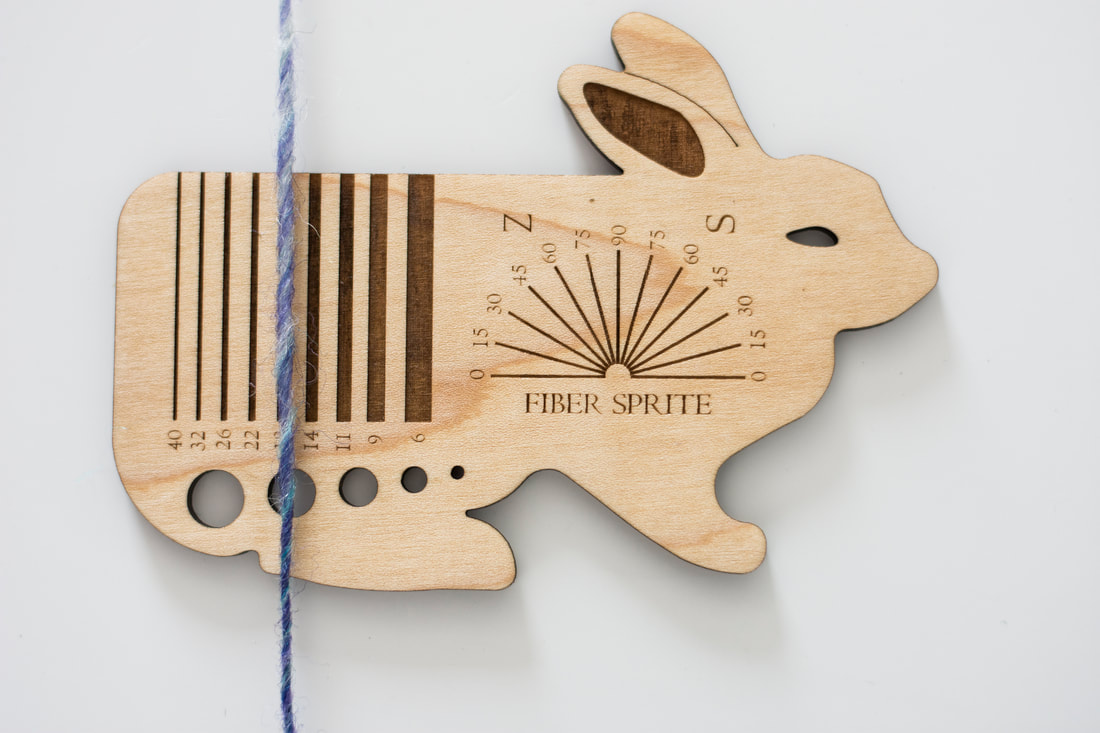
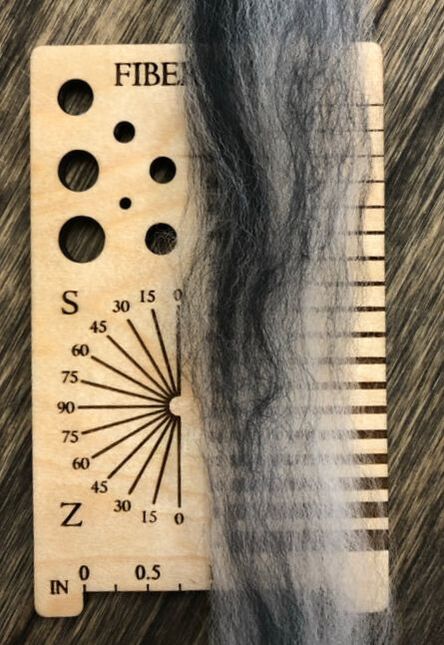
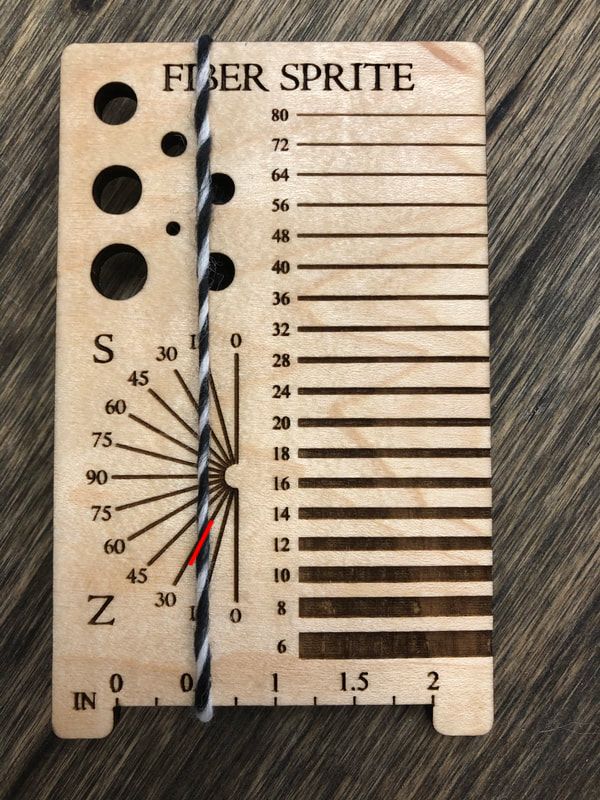
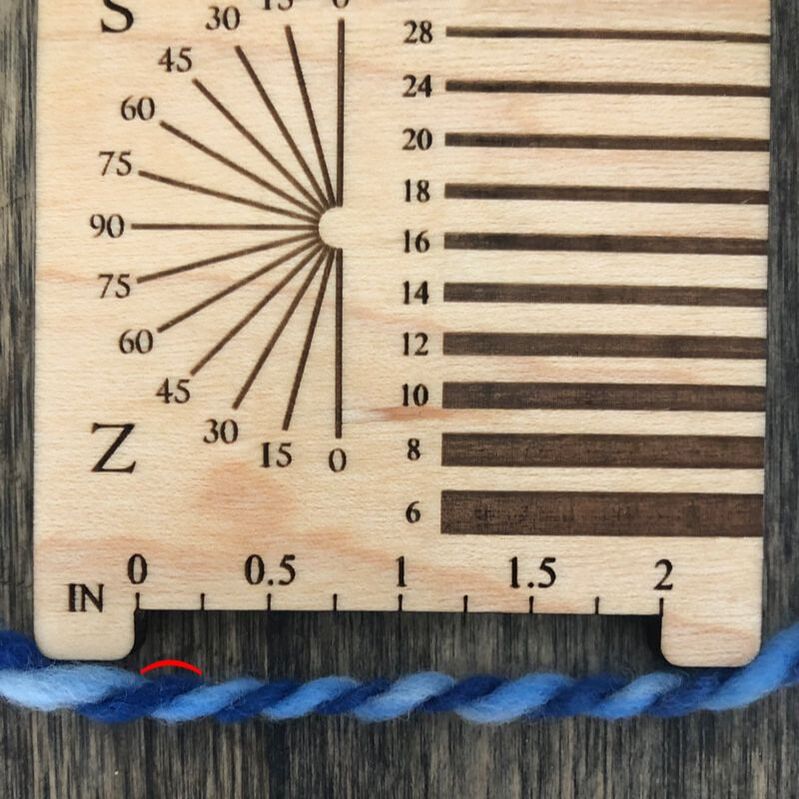
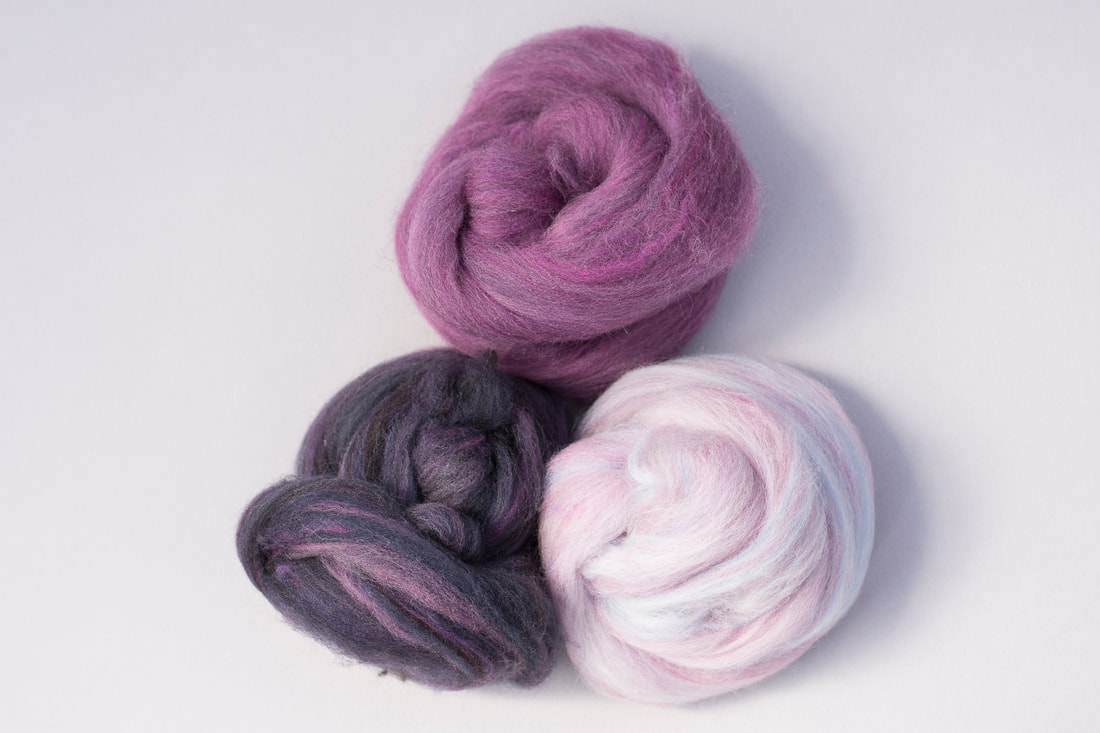
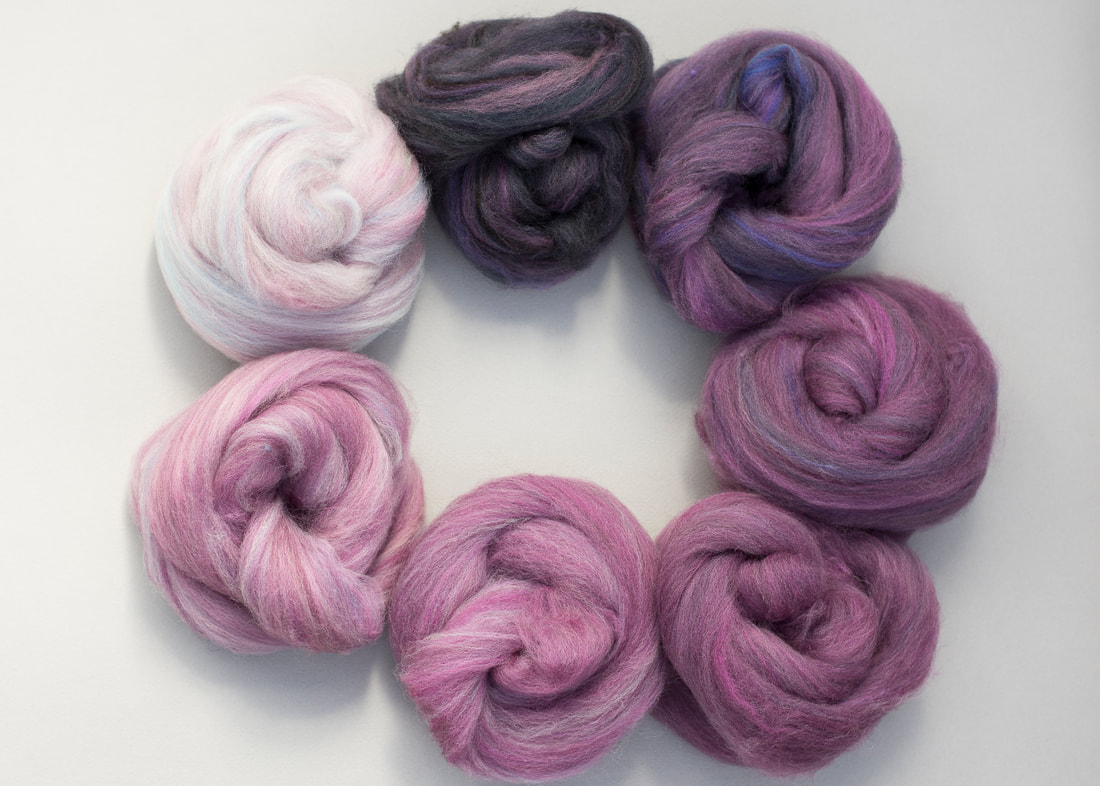
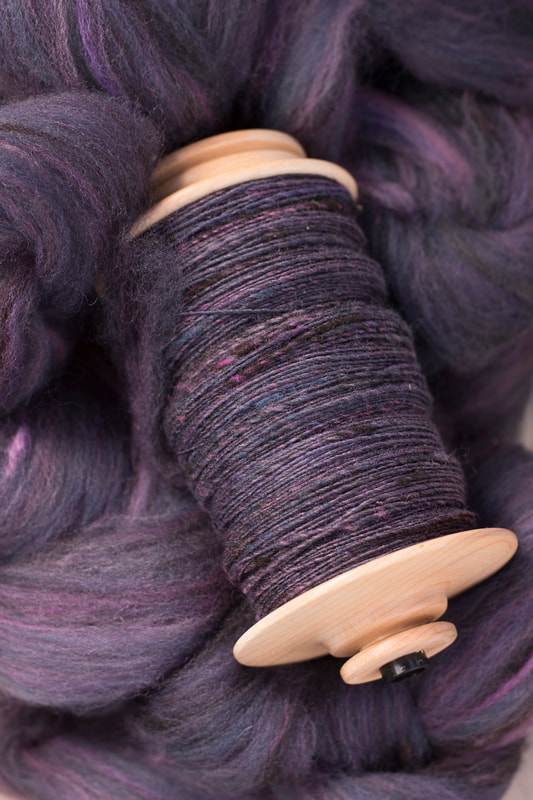
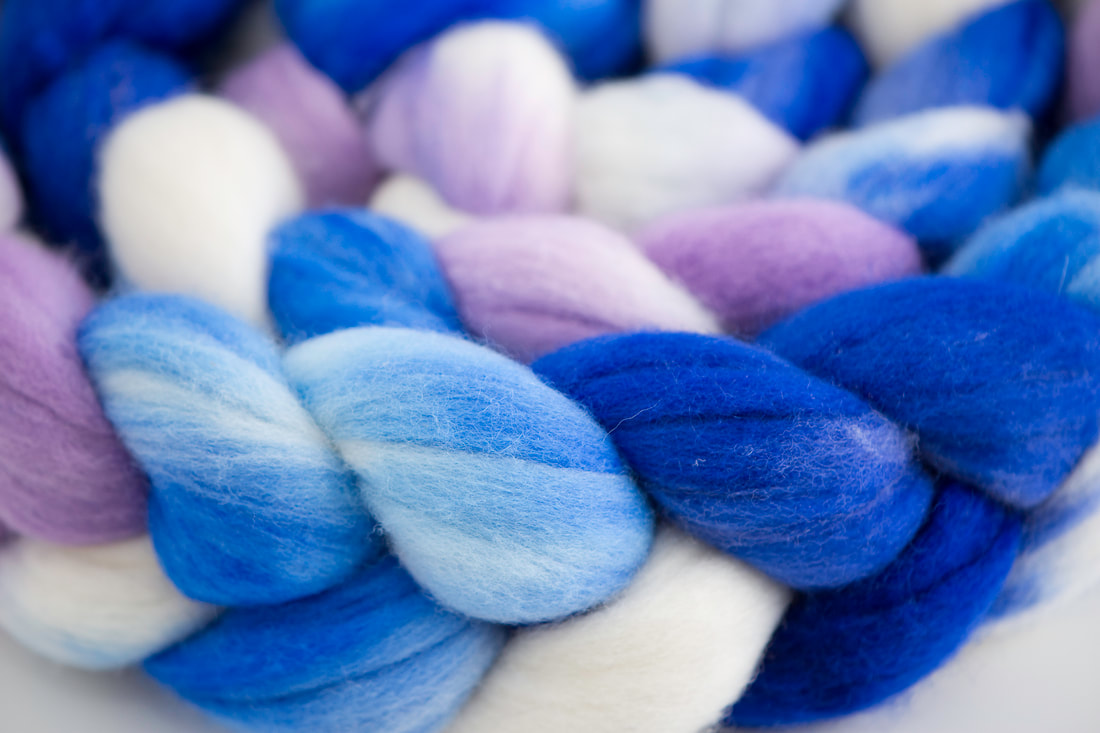
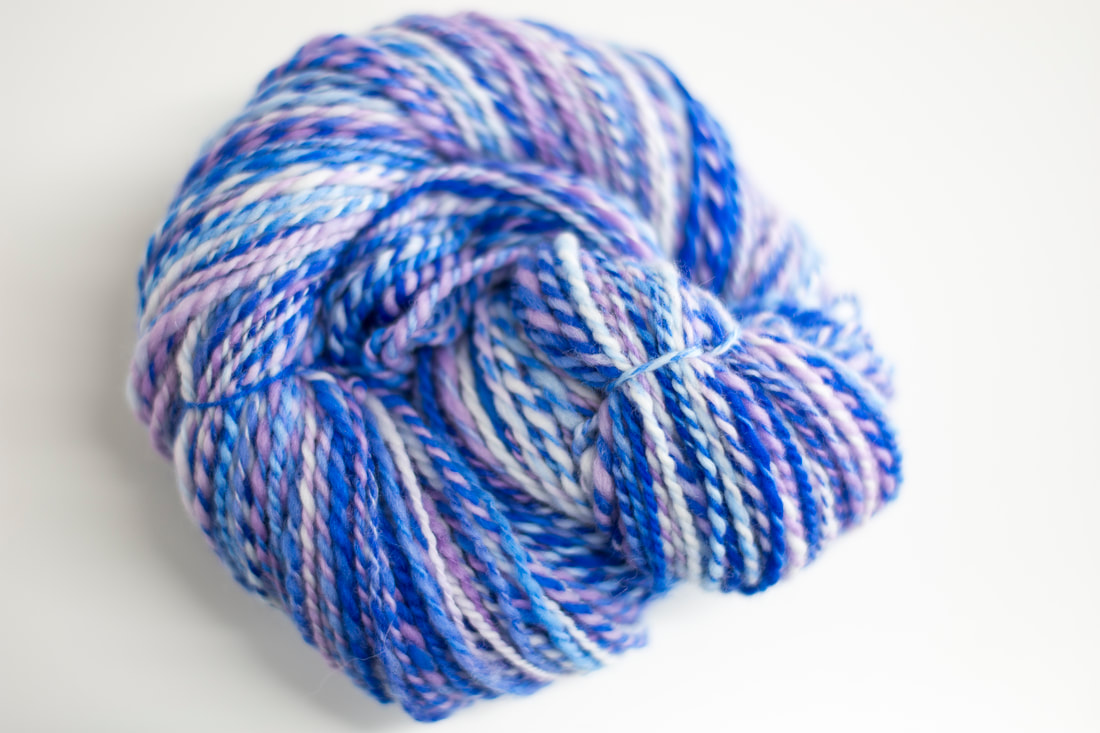
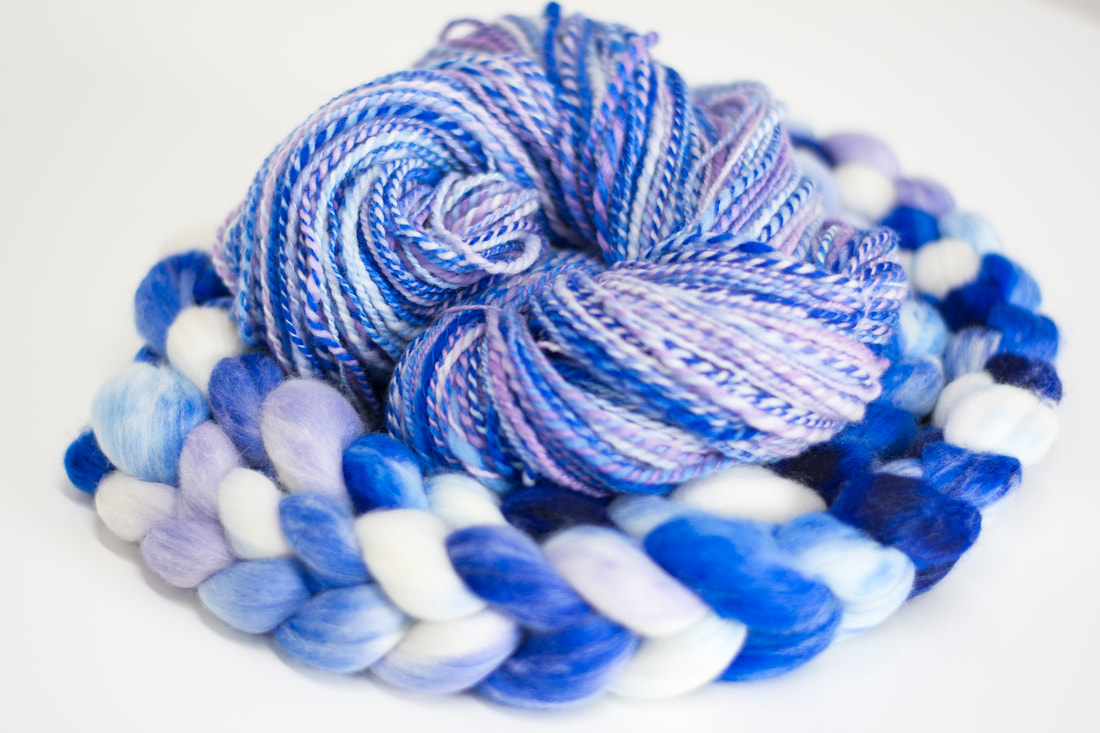
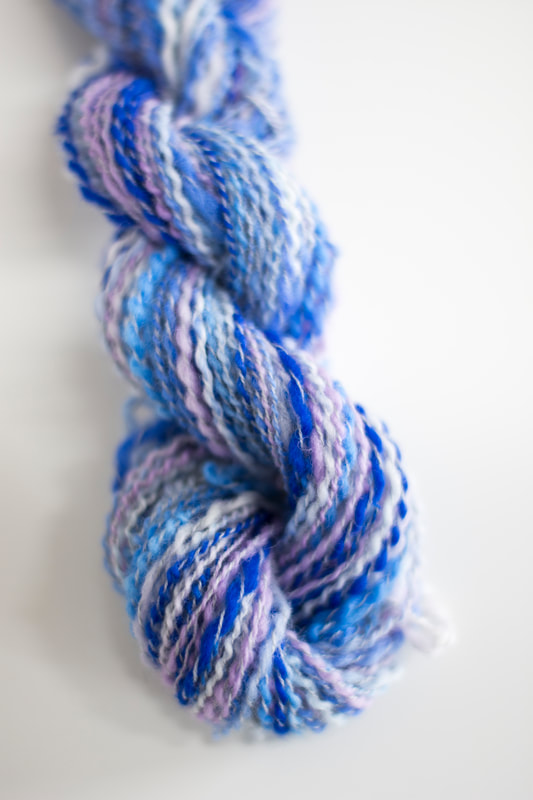
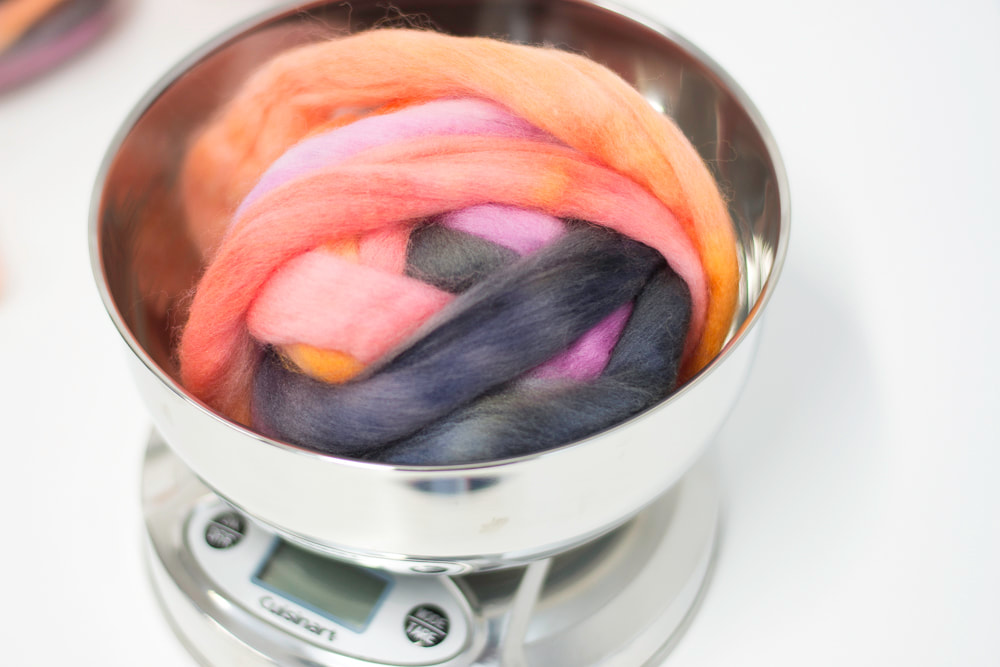
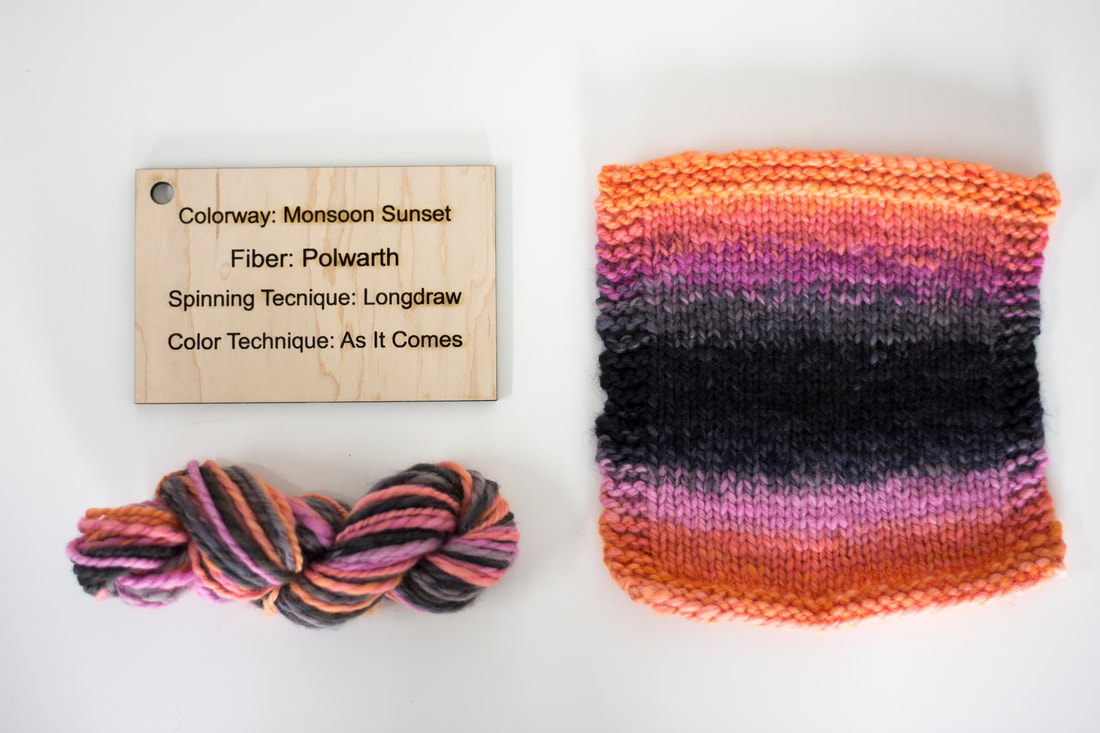
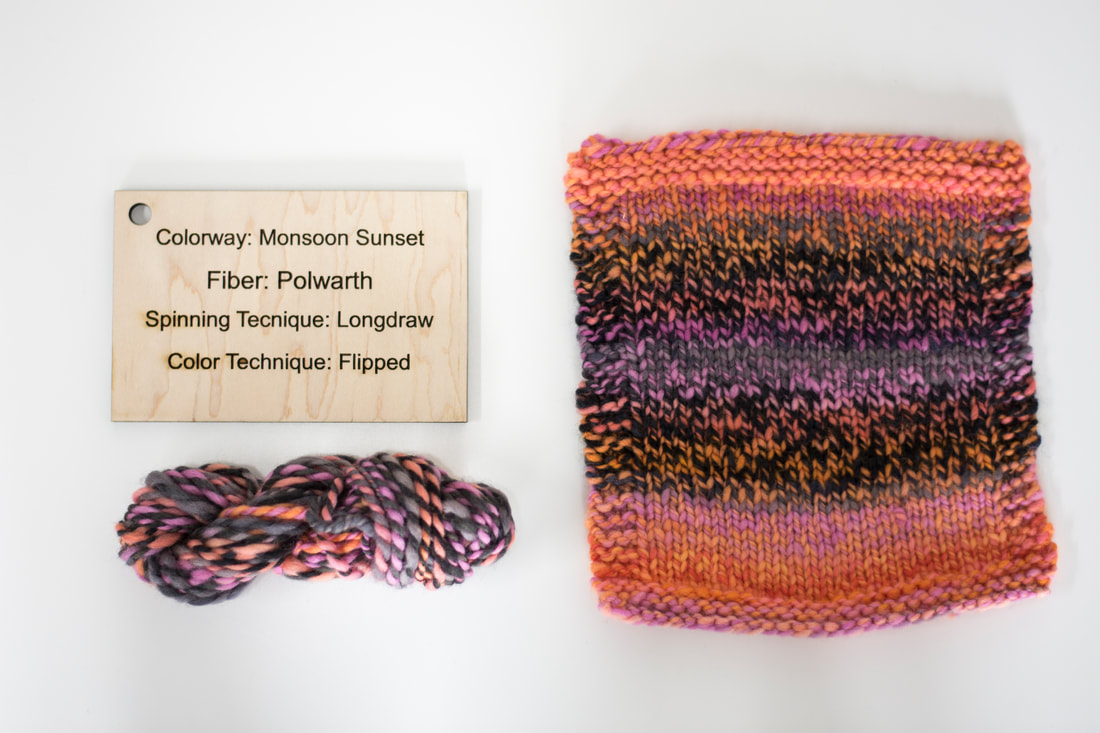
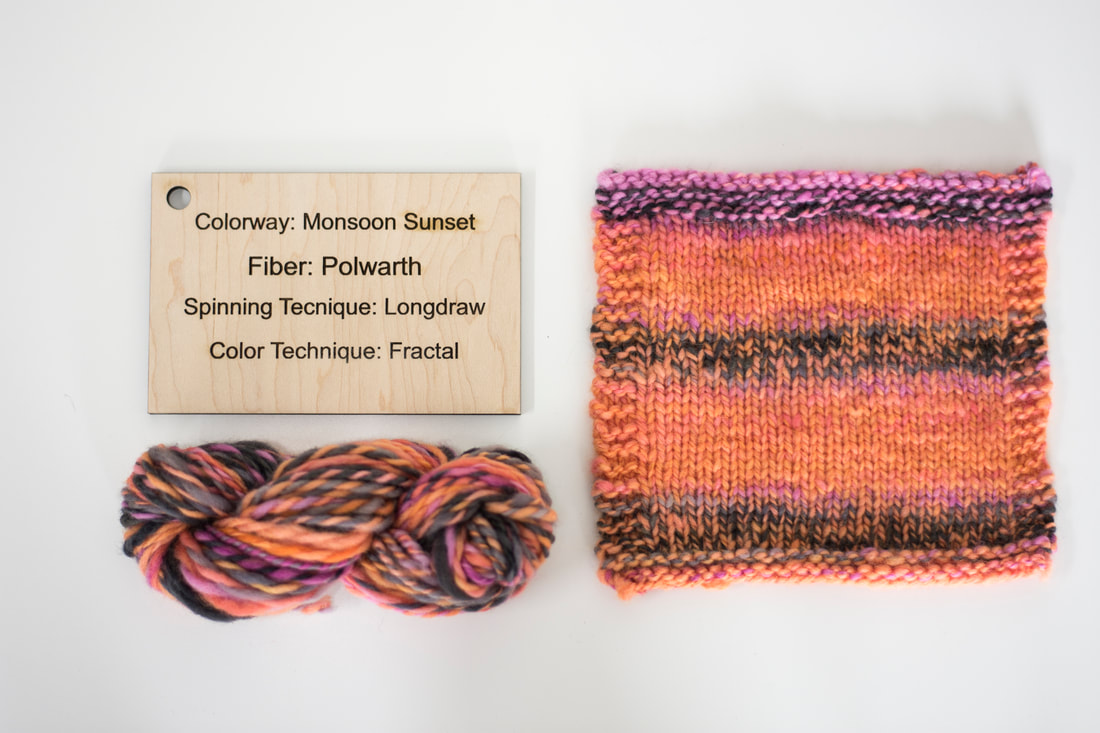
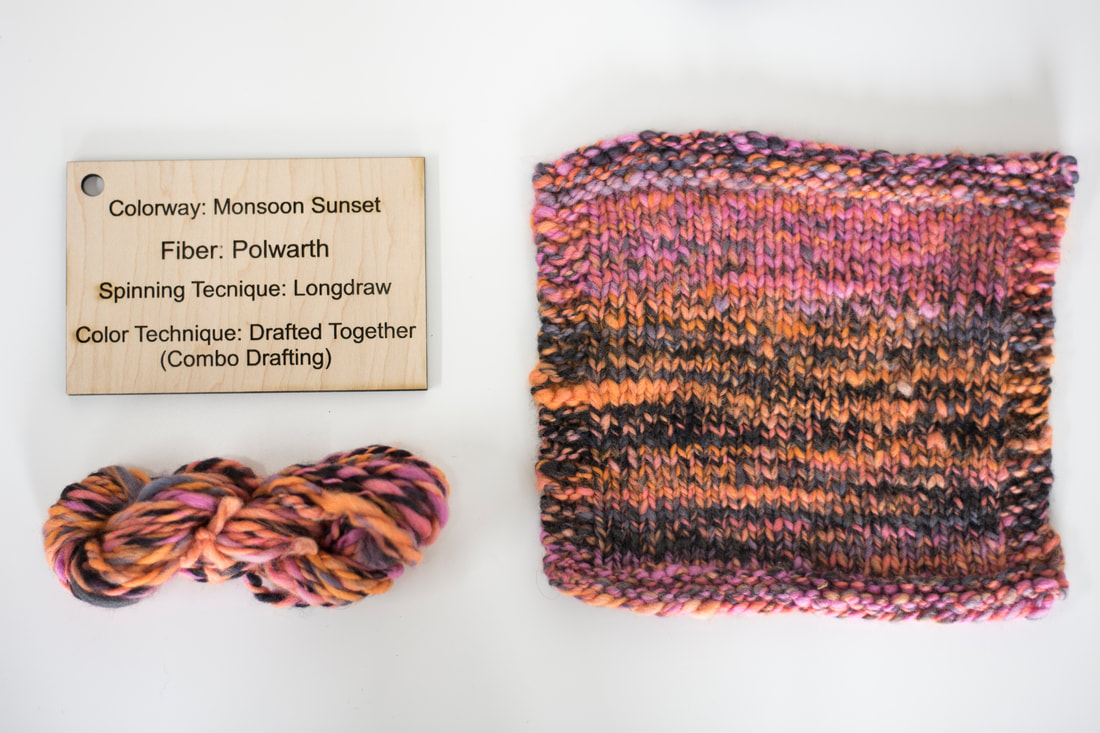
 RSS Feed
RSS Feed